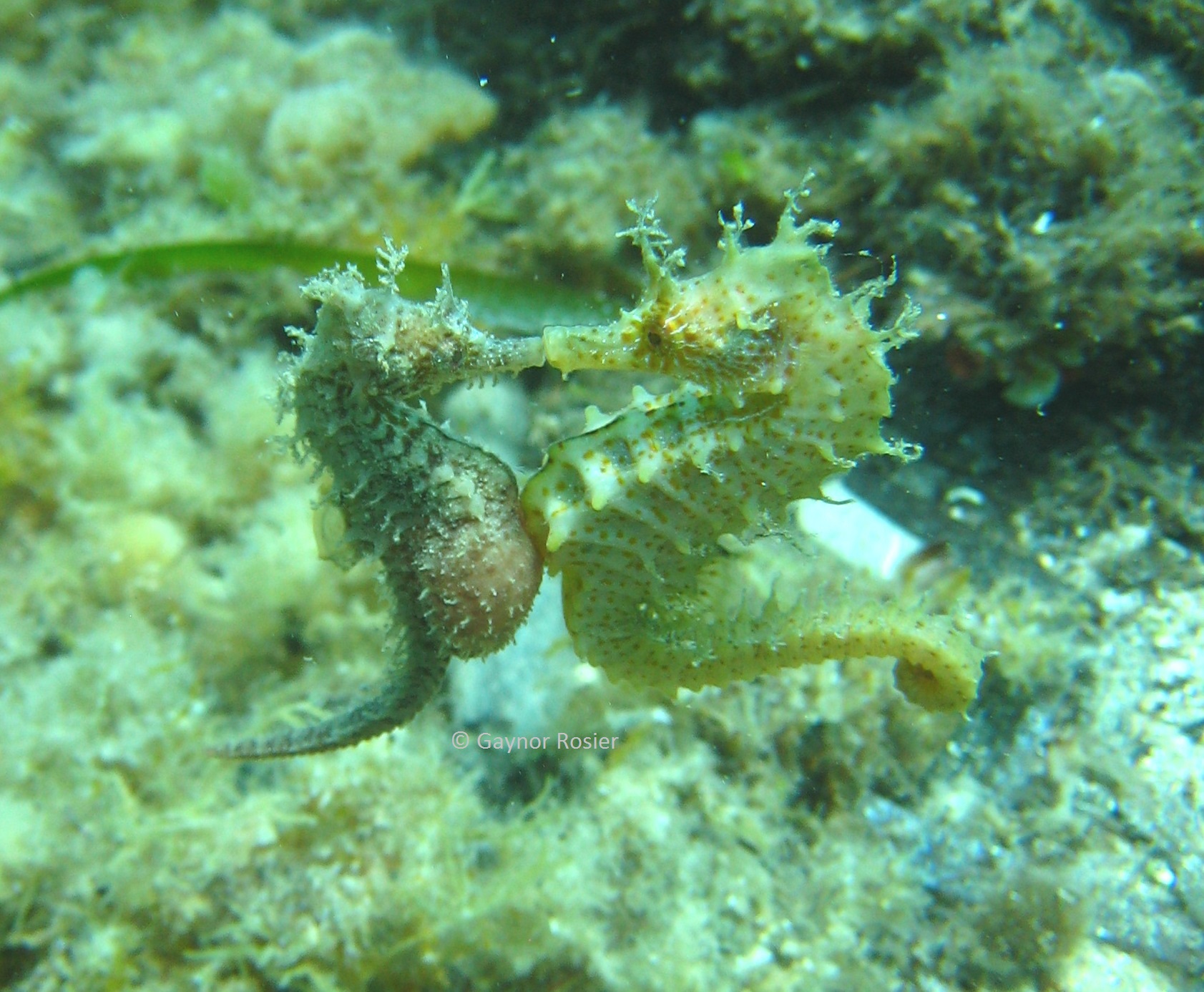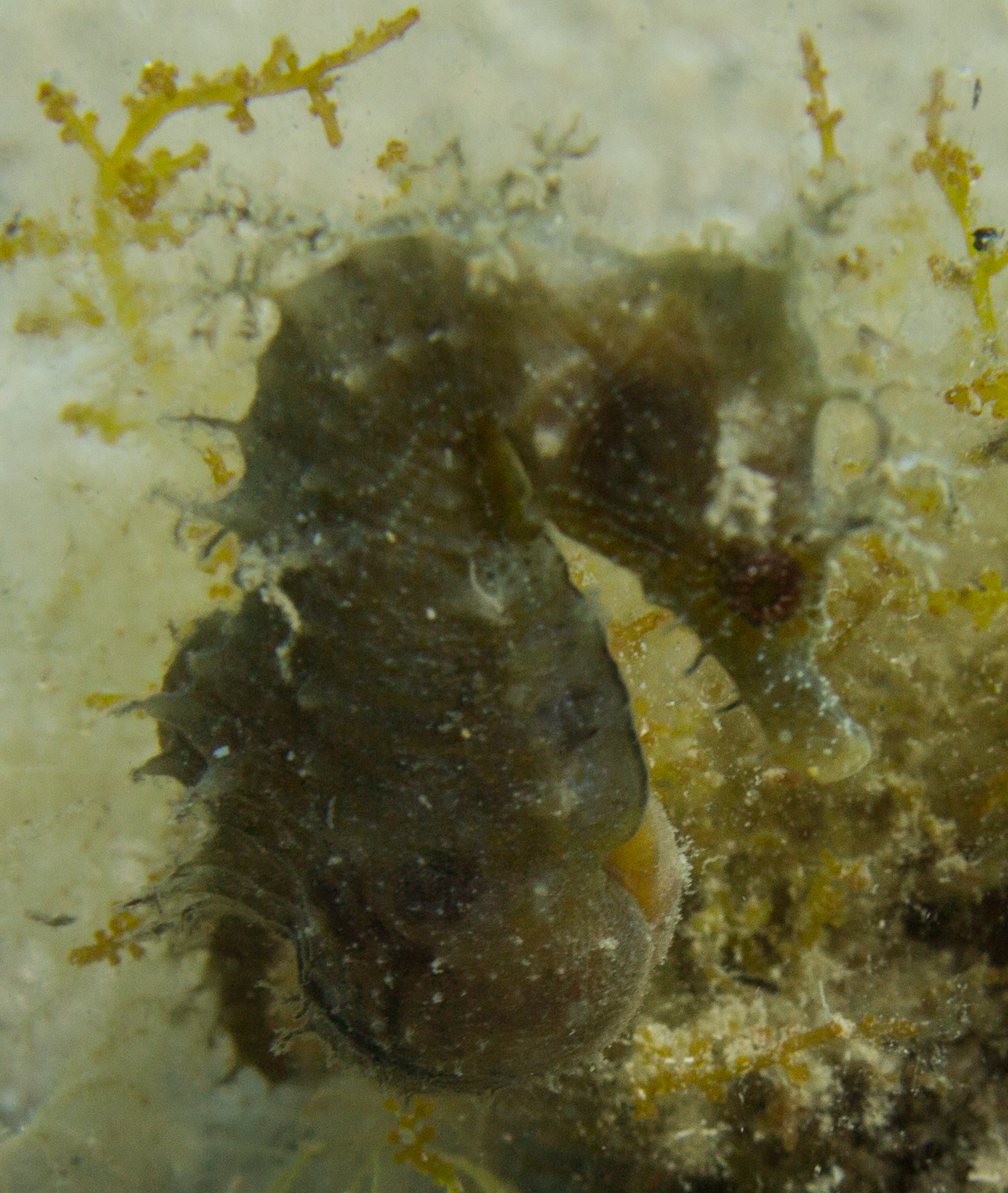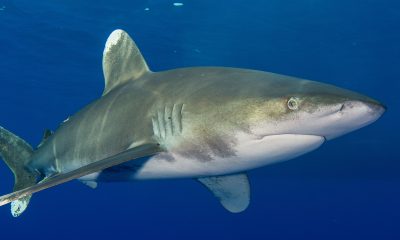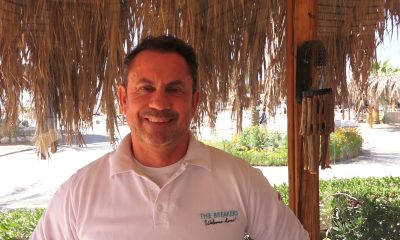News
Kenna Eco Diving Seahorse Project

Why study seahorses?
Seahorses are strange and mythical creatures that have many unique characteristics. They are classed as “Data Deficient” in CITES (Convention on International Trade in Endangered Species of Wild Fauna and Flora) because they are very challenging to study in the wild and there is much that we do not know about their secretive lives.
Seahorses represent habitats that need protection and help to advance marine conservation, serving as excellent flagship species for a wide range of marine conservation issues.
Threatened by overexploitation
Seahorses are exploited world-wide in their millions for use in Chinese medicine, as curios, snacks, and for the aquarium trade. In Hong Kong they sell for $550 per pound, and the illegal trade is so lucrative that smuggled stashes worth many thousands of dollars on the black market are discovered regularly.
The male brooding that is a unique characteristic of seahorses means that the young depend on parental survival for far longer than in most fish. They are mainly monogamous, at least during a season, and widowed animals don’t reproduce until they find a new partner. Their low population density means that lost partners are not quickly replaced. Seahorses are poor swimmers. Low adult mobility and small home ranges restrict recolonization of depleted areas.
Seahorses comprise one genus (Hippocampus) of the family Syngnathidae, which means “fused jaw”. Pipefish and seahorses diverged during the Late Oligocene. Hippos means “horse” and Campus means “sea-monster.”
Seahorses’ unique characteristics include a horse-like head, independently moving eyes, like a chameleon; a brood pouch, called a marsupium, in which the male nourishes the developing young. With their ability to change colour they are masters of camouflage and have filaments that they can grow and reabsorb that help them to blend into the background. Seahorses have no scales, but bony plates under the skin. The prehensile tail is made up of bony plates that can slide across each other to withstand the crushing force of a bird or turtle beak. This amazing design of nature is now being studied for use in body armour and robotics. In fact, the only similarity to other fish is having gills and fins (which oscillate at 35 to 70 beats per second!).
There are 54 recognised species of seahorses within the genus Hippocampus, mostly in tropical seas. In Europe we have only two species: Hippocampus hippocampus and Hippocampus guttulatus. They are classified as “Near Threatened” on the Mediterranean Red List.
Breeding
Breeding is controlled by several factors, the most obvious being the availability of a mate. Some of the females in the Kenna Eco Diving Seahorse Project study area seem to lack a mate and, due to the monogamy of seahorses, are unlikely to find one. Lone females have been seen to travel a hundred square meters, over the course of a week, in search of a mate.
Males have a home range of just a few square meters and mated females have a larger, overlapping territory.
Seahorses perform a daily greeting ritual that reinforces the pair bond.
The number of hours of daylight controls female egg production and male incubation period, with seawater temperature having a reinforcing effect. Seahorse eggs are 5 times bigger and 10 times heavier than other marine fish eggs.
Captive breeding success
Following a decade of research in Spain and Portugal, the European Spiny seahorse is now being bred in captivity with a 90% survival rate. This is a much higher survival rate than in the wild, and aquarium specimens should now all be captive bred.
However, they cannot be released to repopulate the sea until habitat destruction and illegal fishing is prevented. Seahorses are naturally predated upon by Octopus, Scorpionfish, Turtles and Sea birds. But the greatest predator is man!
Seahorse fry spend their first few weeks as part of the plankton, where they are eaten by pelagic species, until the survivors settle into the safety of the seagrass. Less than 1% live to reach adulthood.
Feeding
The horses head shape evolved for pivot feeding to give greater reach and eliminate wake to catch their tiny but very quick copepod prey unawares. Seahorses have a 1 millisecond strike and a 90% catch rate. The independent eyes allow them to focus on prey whilst also keeping an eye out for predators. Food is sucked in through the snout. They have no teeth or stomach, so food has to be easily digestible. Adults eat 70 copepods (Mysis shrimp) per day. Seahorse fry eat thousands during their pelagic stage.
Kenna Eco Diving Seahorse Project
This project is studying the two European species of seahorses that live in the Mediterranean Sea: Hippocampus hippocampus and Hippocampus guttulatus.
Field research is challenging due to several issues. Seahorses are very hard to spot due to their amazing camouflaging abilities. Finding sparse populations is very difficult. In fact, I spent 15 years searching before finding a pair by accident!
They are shy and easily stressed. Therefore excellent buoyancy control is required to avoid disturbing them. Volunteers with Kenna Eco Diving practice buoyancy exercises before being allowed to visit “Seahorse City”, the nickname given to our study area.
In order to identify and monitor individuals we take macro photos using only ambient light. This is because seahorses are especially sensitive to light. They carry dormant diseases that can take hold if they become stressed. We have to gather data without disturbing them.
During our 2014 research season 28 individuals were catalogued, each with ID photographs and a fitting name. Mr Itchy was christened because of his use of his tail in a strange scratching behaviour*. It was suspected that he was suffering from one of the skin diseases that can cause a rapid death. Fortunately the behaviour ceased after several weeks and he was still around at the end of summer before the group moved off to over-winter deeper in the shelter of the Posidonia oceanica seagrass meadow.
Meet Mr Itchy in this video:
[youtube id=”lqITwF3yYBI” width=”100%” height=”400px”]
Gear News
Scubapro Free Octopus Promotion 2024

Free Octopus with every purchase of a SCUBAPRO regulator system
Just in time for the spring season, divers can save money with the FREE OCTOPUS SPRING PROMOTION! Until July 31st SCUBAPRO offers an Octopus for free
with every purchase of a regulator system!
Get a free S270 OCTOPUS with purchase of these combinations:
MK25 EVO or MK19 EVO with A700
MK25 EVO or MK19 EVO with S620Ti
MK25 EVO or MK19 EVO with D420
MK25 EVO Din mit S620Ti-X
Get a free R105 OCTOPUS with purchase of the following combinations:
MK25 EVO or MK19 EVO with G260
MK25 EVO or MK17 EVO with S600
SCUBAPRO offers a 30-year first owner warranty on all regulators, with a revision period of two years or 100 dives. All SCUBAPRO regulators are of course certified according to the new European test standard EN250-2014.
Available at participating SCUBAPRO dealers. Promotion may not be available in all regions. Find an authorized SCUBAPRO Dealer at scubapro.com.
More information available on www.scubapro.com.
Blogs
Northern Red Sea Reefs and Wrecks Trip Report, Part 3: The Mighty Thistlegorm

Jake Davies boards Ghazala Explorer for an unforgettable Red Sea diving experience…
Overnight, the wind picked up, making the planned morning dive a bit bumpy on the Zodiacs to the drop point on Thomas Reef. There, we would dive along the reef before descending through the canyon and then passing under the arch before ascending the wall with a gentle drift. The site provided great encounters with more pelagic species, including shoals of large barracuda, tuna, and bigeye trevally.
Once back on the boat, it was time to get everything tied down again as we would head back south. This time, with the wind behind us, heading to Ras Mohammed to dive Jackfish Alley for another great gentle drift wall dive before then heading up the coast towards the Gulf of Suez to moor up at the wreck of the Thistlegorm. This being the highlight wreck dive of the trip and for many onboard, including myself, it was the first time diving this iconic wreck. I had heard so much about the wreck from friends, and globally, this is a must on any diver’s list. Fortunately for us, there was only one other boat at the site, which was a rarity. A great briefing was delivered by Ahmed, who provided a detailed background about the wreck’s history along with all the required safety information as the currents and visibility at the site can be variable.

Kitting up, there was a lot of excitement on deck before entering the water and heading down the shoreline. Descending to the wreck, there was a light northerly current which reduced the visibility, making it feel more like the conditions that can be found off the Welsh coast. At 10m from the bottom, the outline of the wreck appeared as we reached the area of the wreck which had been bombed, as our mooring line was attached to part of the propeller shaft. Arriving on deck, instantly everywhere you looked there were many of the supplies which the ship was carrying, including Bren Carrier tanks and projectiles that instantly stood out.

We headed around the exterior, taking a look at the large propeller and guns mounted on deck before entering the wreck on the port side to take a look in the holds. It was incredible to see all the trucks, Norton 16H, and BSA motorcycles still perfectly stacked within, providing a real snapshot in time.

Overall, we had four dives on the Thistlegorm, where for all of the dives we were the only group in the water, and at times, there were just three of us on the whole wreck, which made it even more special, especially knowing that most days the wreck has hundreds of divers. Along with the history of the wreck, there was plenty of marine life on the wreck and around, from big green turtles to batfish, along with shoals of mackerel being hunted by trevally. Some unforgettable dives.

The final leg of the trip saw us cross back over the Suez Canal to the Gobal Islands where we planned to stay the night and do three dives at the Dolphin House for the potential of sharing the dive with dolphins. The site, which included a channel that was teeming with reef fish, especially large numbers of goatfish that swam in large shoals along the edge of the reef. These were nice relaxing dives to end the week. Unfortunately, the dolphins didn’t show up, which was okay as like all marine life they are difficult to predict and you can’t guarantee what’s going to be seen. With the last dive complete, we headed back to port for the final night where it was time to clean all the kit and pack before the departure flight the next day.

The whole week from start to finish on Ghazala Explorer was amazing; the boat had all the facilities you need for a comfortable week aboard. The crew were always there to help throughout the day and the chefs providing top quality food which was required after every dive. The itinerary providing some of the best diving with a nice mixture of wreck and reef dives. I would recommend the trip to anyone, whether it’s your first Red Sea liveaboard in the Red Sea or you’re revisiting. Hopefully, it’s not too long before I head back to explore more of the Red Sea onboard Ghazala Explorer.

To find out more about the Northern Red Sea reef and wrecks itineraries aboard Ghazala Explorer, or to book, contact Scuba Travel now:
Email: dive@scubatravel.com
Tel: +44 (0)1483 411590
Photos: Jake Davies / Avalon.Red
-

 News3 months ago
News3 months agoHone your underwater photography skills with Alphamarine Photography at Red Sea Diving Safari in March
-

 News3 months ago
News3 months agoCapturing Critters in Lembeh Underwater Photography Workshop 2024: Event Roundup
-

 Marine Life & Conservation Blogs2 months ago
Marine Life & Conservation Blogs2 months agoCreature Feature: Swell Sharks
-

 Blogs2 months ago
Blogs2 months agoMurex Resorts: Passport to Paradise!
-

 Blogs2 months ago
Blogs2 months agoDiver Discovering Whale Skeletons Beneath Ice Judged World’s Best Underwater Photograph
-

 Marine Life & Conservation2 months ago
Marine Life & Conservation2 months agoSave the Manatee Club launches brand new webcams at Silver Springs State Park, Florida
-

 Gear Reviews3 months ago
Gear Reviews3 months agoGear Review: Oceanic+ Dive Housing for iPhone
-

 Gear Reviews2 weeks ago
Gear Reviews2 weeks agoGEAR REVIEW – Revolutionising Diving Comfort: The Sharkskin T2 Chillproof Suit

















